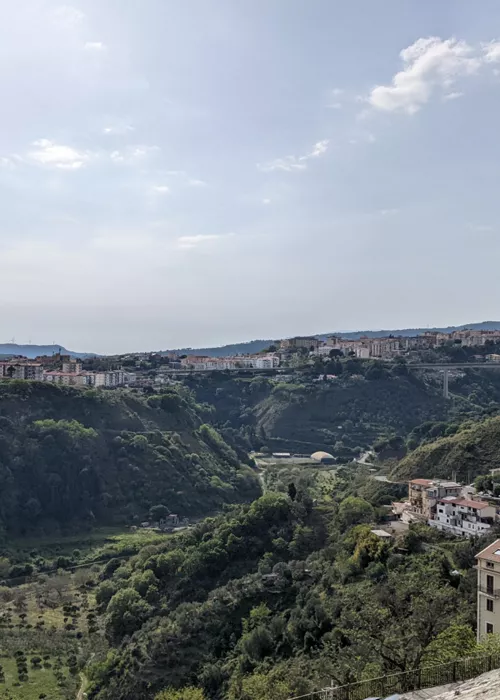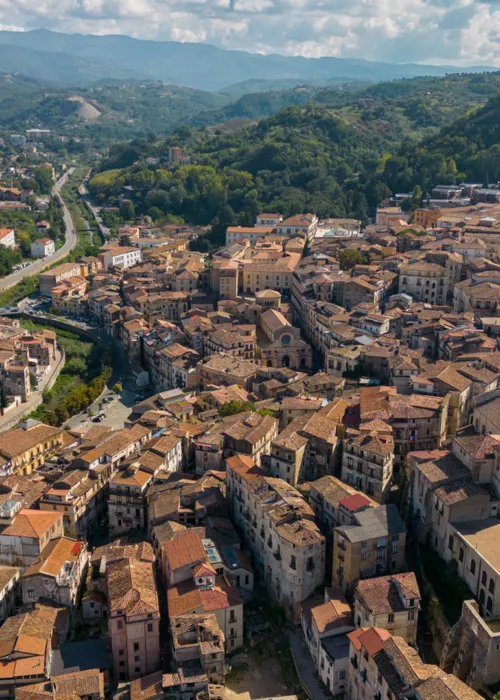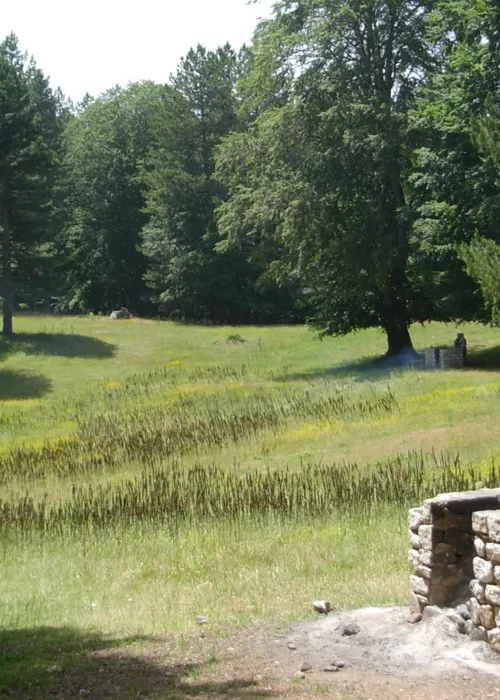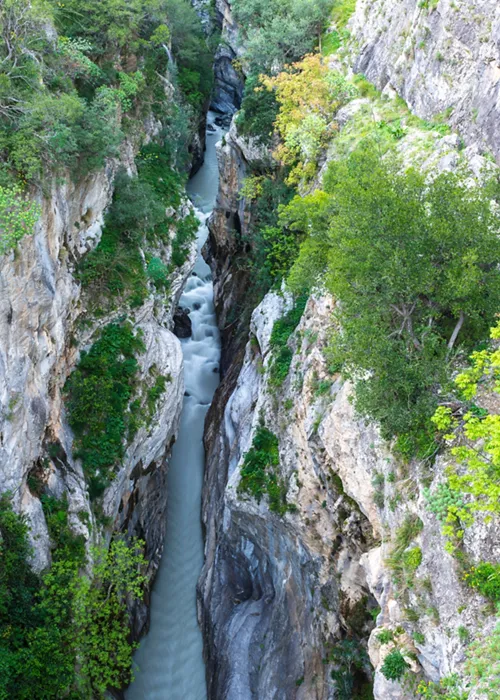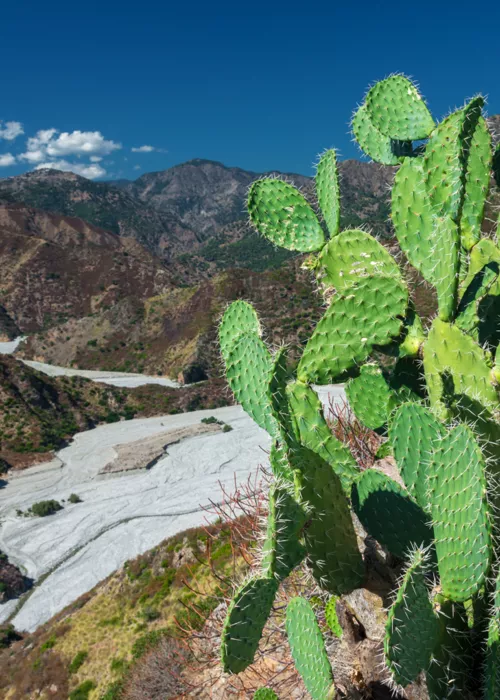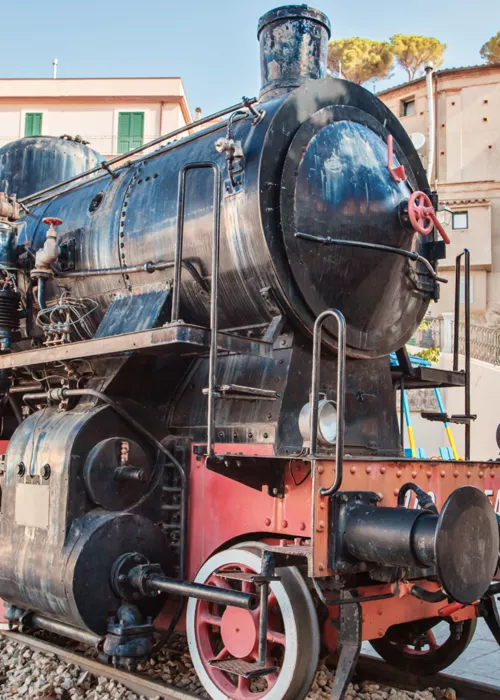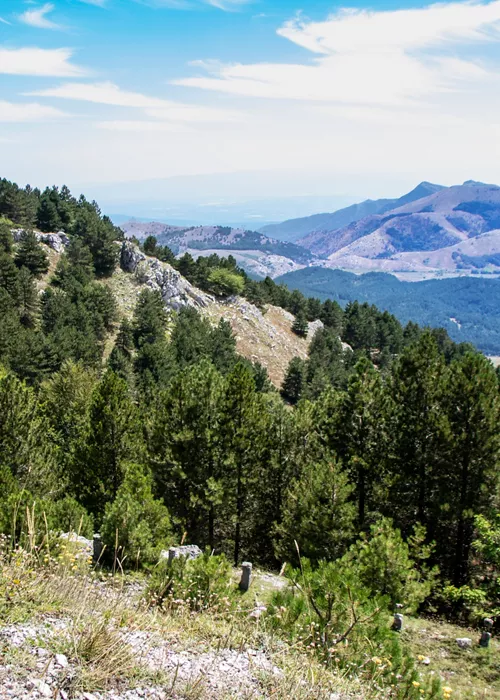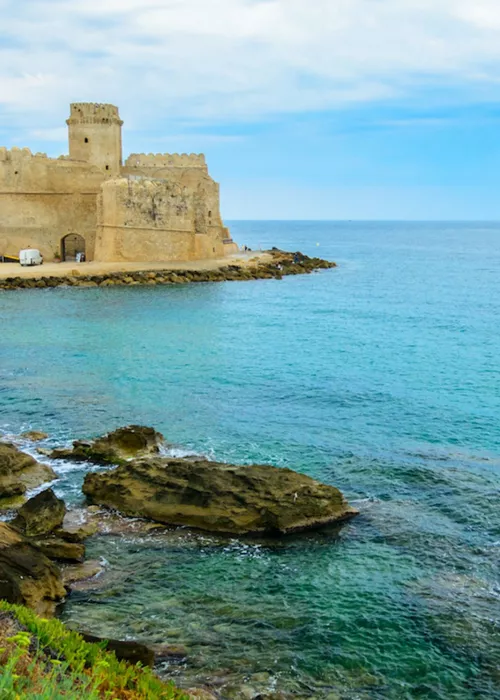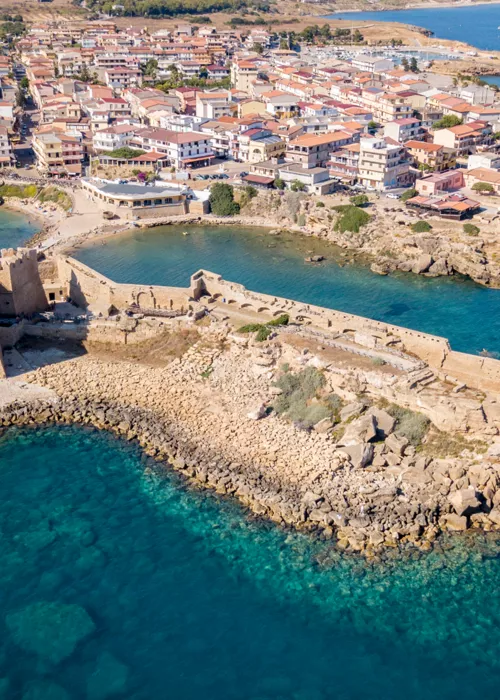The villages of Morano Calabro, Laino Borgo and Papasidero in Northern Calabria
9 minutes

Aside from the 800km coastline, Calabria is a mountainous region, and geography profoundly influenced its history and culture. It's primarily inland that one can find ancient hilltop villages offering a vantage point to control the plain and the coastline. That was one of the main reasons I was keen to discover Northern Calabria and a few of its most beautiful towns. If you'd like to experience authentic Italy, you'll want to read further. I was stunned, and you'll be too.
Morano Calabro: a beautiful medieval village in the Pollino National Park.

Perched atop a hill at an altitude of 694m a.s.l, Morano Calabro is one of the most important towns in the Pollino National Park, the largest in Italy. Morano Calabro has held a relevant role since ancient times thanks to its strategic location, reaching the peaks of its splendour in the Middle Age and the Renaissance.
Top 5 things not to miss
- Climb up to the ruins of the Norman-Swabian castle and admire the stunning scenery
- Get lost in the picturesque alleys.
- Visit the main religious buildings: S. Maria Annunziata, the collegiate church of St. Peter and Paul, Santa Maria Maddalena and its tiled dome, and the San Bernardino da Siena monastery.
- Taste the delicious local products and food specialities: hand-made pasta often dressed with a tomato and sausage sauce, spicy cured meat, pecorino di Morano, a tasty sheep-milked cheese, and bocconotto, a typical homemade pastry.
- Hike or bike in the Pollino National Park, a UNESCO Global Geopark since 2015.
Arriving by car, the village suddenly appeared and immediately took my breath away. In front of me, a cone-shaped steep hill, crammed houses covering the surface, and wild mountains in the backdrop. Impossible not to stop to get in the panoramic view of Morano Calabro from below. From that perspective, I could feel what it meant - centuries ago - to build a village having in mind defensive purposes.
Wandering in the steep alleys, it didn't take long to see why Morano Calabro is included in the list of the most beautiful villages in Italy (Borghi più Belli d'Italia). The town is also certified with the Orange Flag of the Italian Touring Club, a tourist-environmental quality mark for small towns. Climbing the maze of meandering back streets, lined by a compact fabric of houses, felt like stepping back in time. The many plants decorating windows and balconies show how much the locals still living in Morano Calabro love their town. Not the cutesy compositions created by landscape designers but the spontaneous and genuine taste for simple and authentic beauty.

I was so fascinated that I stopped every few steps, snapping photos and taking in the small details until I eventually reached the top of the hill.
It took me a while to reach the top of the hill, where the ruins of the Norman-Swabian castle, surrounded by mountains, dominate the plains below. No better way to spot attempts of incursions from enemies, a constant feature in medieval towns throughout Italy. Although it's a beautiful spot at any time of the day, it's at sunset that the views from the castle reach their peak. The landscape is breathtaking, beautified by the warm half-light and long shadows.

Morano Calabro reached a cultural peak during the Renaissance thanks to the Sanseverino di Bisignano family, who commissioned remarkable works of art that are still visible. The most outstanding is the Polittico Sanseverino, painted in 1477 by the Venetian artist Bartolomeo Vivarini and undoubtedly a must-see. The other attractive landmarks are all religious buildings. The interior of St. Peter and Paul church is a delightful example of the Rococo style. Another landmark not to miss is the collegiate church of Santa Maria Maddalena. It stands out for its dome, entirely covered in green and ochre maiolica tiles, visible from almost everywhere.
After dusk, the atmosphere of the village, with its dimly lit alleys, becomes very romantic. One more reason to spend at least one night in Morano Calabro. Most people visit the town as a day trip from the coast. While it is a lovely excursion, there's a lot to do in the surroundings, especially for those who love active travel.
I spent a day hiking in the Pollino National Park, admiring the wild, uncontaminated landscape. Aside from the abundance of hiking and biking trails, the Pollino National Park - included in 2015 in the UNESCO Geoparks list - houses the oldest tree in Europe, a Heldreich's pine estimated to be over 1200 years old, which has become the symbol of the Pollino.

Even if you're not into sports, I highly recommend visiting the park to discover this breathtaking natural area. There are several short and easy hikes, some of which will allow you to see the beautiful Heldreich's pines.
Laino Borgo: the painted village
The small village of Laino Borgo lies at the border between Calabria and Basilicata and is immersed in the Pollino National Park. I visited it on a day trip from Morano Calabro, but many people also get there from the coastal towns of Scalea or Praia a Mare. Whichever the starting point, get ready for a ride on winding roads, climbing up and down the hills. The drive can easily take you longer than expected, but it will reward you with stunning views.

Top 5 things not to miss
- Wander in the steep alleys and follow the street art embellishing the old town
- Admire the beautiful murals in the lower part of the village, and discover what local life used to be
- Go rafting on the Lao river
- Visit the Sanctuary of the Chapels
- Hike or bike in the Pollino National Park
Actually, Laino consists of two borghi, which, in itself, is fascinating. From Laino Borgo, the lower village, if you look up, you'll see Laino Castello, the second hamlet perched atop a spur, which is now a ghost town. The first thing that intrigued me was the setting. Looking at the luxurious vegetation surrounding Laino Borgo and the hills and mountains encircling the town, I would never have guessed that Laino Borgo is only at a 271m altitude. It almost feels like being in the mountains, not just a little above sea level.
Like many towns in Italy, Laino Borgo has its fair share of religious buildings worth visiting. One above all is the Sanctuary of the Chapels (Santuario delle Cappelle), only a few kilometres from the village. The shrine, built in the 16th century by Domenico Longo, a worshipper from Laino, is known for its sixteen small chapels. Although simple, all of them are decorated with scenes from the Holy Land so that all the people unable to make a pilgrimage could get an idea of the most important sites in Jerusalem and the passion and death of Christ.

But there's more to this charming village: the murals. As I started strolling in the town's alleys in the upper portion of the hamlet, I soon noticed a few murals and outdoor installations. Hanging umbrellas, colourful staircases with messages written on the steps, and wall paintings. Lovely. However, it's in the lower part of Laino Borgo, closer to the river, that I discovered some genuinely stunning street art. What sets these paintings apart is not only the touch of bright colours it confers to the narrow streets: above all, it's the subjects. Most of them show scenes of traditional village life, as it used to be until not long ago. Women crushing grapes with their feet to make wine or riding donkeys carrying the harvest, families shelling beans and other vegetables, and elderlies sitting on a bench chatting. The murals are a lovely way to show how lives used to be in small, isolated hamlets.
Laino Borgo is also a popular destination for rafting on the river Lao. There are several itineraries of different lengths and difficulties, drifting between gorges and canyons amid a scenery one would hardly expect in southern Italy.
From Laino Borgo, I drove up to Laino Castello. Access to the ghost town at that time was not allowed. Nonetheless, I loved the meandering road, the sight of the houses at the top of the hill, and the breathtaking wild scenery all around.
No wonder Laino Borgo has been included in the list of Authentic Italian Villages (Borghi Autentici d'Italia), an association focusing on small and medium-sized towns committed to sustainable development and preservation of the local culture. It's a village that is well worth visiting and offers a lot.
Papasidero: a tiny village with prehistoric origins
Perched on a hilltop in the Pollino National Park, Papasidero is a tiny village boasting a lot of history. Only 650 people live in the hamlet, but many are passionate about their homeland and deeply involved in making its beauty known. This is also an area of incredible prehistoric findings.

Top 5 things not to miss
- The Romito cave (Grotta del Romito)
- Rafting on the Lao river
- Meeting the locals of Visit Papasidero.
- A stroll in the village, which maintained its medieval structure, Sanctuary of Nostra Signora di Costantinopoli and Santa Sofia Chapel.
- Taste the local food specialities (cheese, cured meat, home-grown vegetables prepared in different fashions).
Like Laino Borgo, the landscape surrounding Papasidero is stunning. Similarly, you would never think of being at such a low altitude (208m a.s.l) and so close to the sea. As a matter of fact, while the hamlet is small, the Papasidero district is rather large, and its area develops between an altitude of less than 100m a.s.l. up to 1463m a.s.l. Quite impressive!
Papasidero is best known for the Romito Cave (Grotta del Romito), one of the oldest prehistoric sites in Europe. Discovered in 1961, the cave allowed to prove human presence in this area since the Paleolithic era. Aside from the beautiful natural setting, the main attractions at the Romito Cave are the Bos Primigenius, a bovine exquisitely carved on a stone, and the ancient burials and human remains. Since its discovery, the cave has been the subject of studies from Florence University. Archaeological diggings and extended research, still underway, shed light on human settlements and traditions that occurred between 23,000 and 10,000 years ago. Although the most important archaeological finds are outside the grotto, it's worth looking inside. The geological formations are beautiful, and I felt like I had suddenly entered a different world.

For lunch, I stopped at a nearby restaurant. There, I tasted some delicious local specialities, most of which are prepared with ingredients from their garden, not to speak about excellent homemade cheese and cured meat. You can hardly have a more sustainable meal than this.
On the way from the Romito Cave to the hamlet of Papasidero, I made a short detour to see Avena. The hamlet, part of the Papasidero district, was abandoned by its inhabitants in 1982 after an earthquake. Even though strolling between the deserted houses of the ghost town was not allowed, the scenery is jaw-dropping and well worth the few additional kilometres.
After more driving along the curvy road, I eventually reached the town of Papasidero. Aside from its stunning settings, it stroke me how isolated the village is. Life is difficult for the inhabitants, and their willingness and work to keep the hamlet alive is admirable. A must-see in Papasidero is the Sanctuary of Nostra Signora di Costantinopoli. Built against the rock, surrounded by lush greenery, and overlooking the river Lao, it's a magical spot.
Useful information
Best time to visit: July and August can get busy with tourists having day trips - and looking for relief from the heat - from the nearby coastal towns. Late Spring and early Autumn are perfect for enjoying the quiet of this area, with temperatures not too hot for hiking and mild enough for water activities.
How to get there: Lamezia Terme is the closest airport. At the moment, public transportation is not available so you’ll need to hire a car. You can visit Morano Calabro, Laino Borgo/Castello, and Papasidero from the nearby sea resorts Scalea and Praia a Mare.



